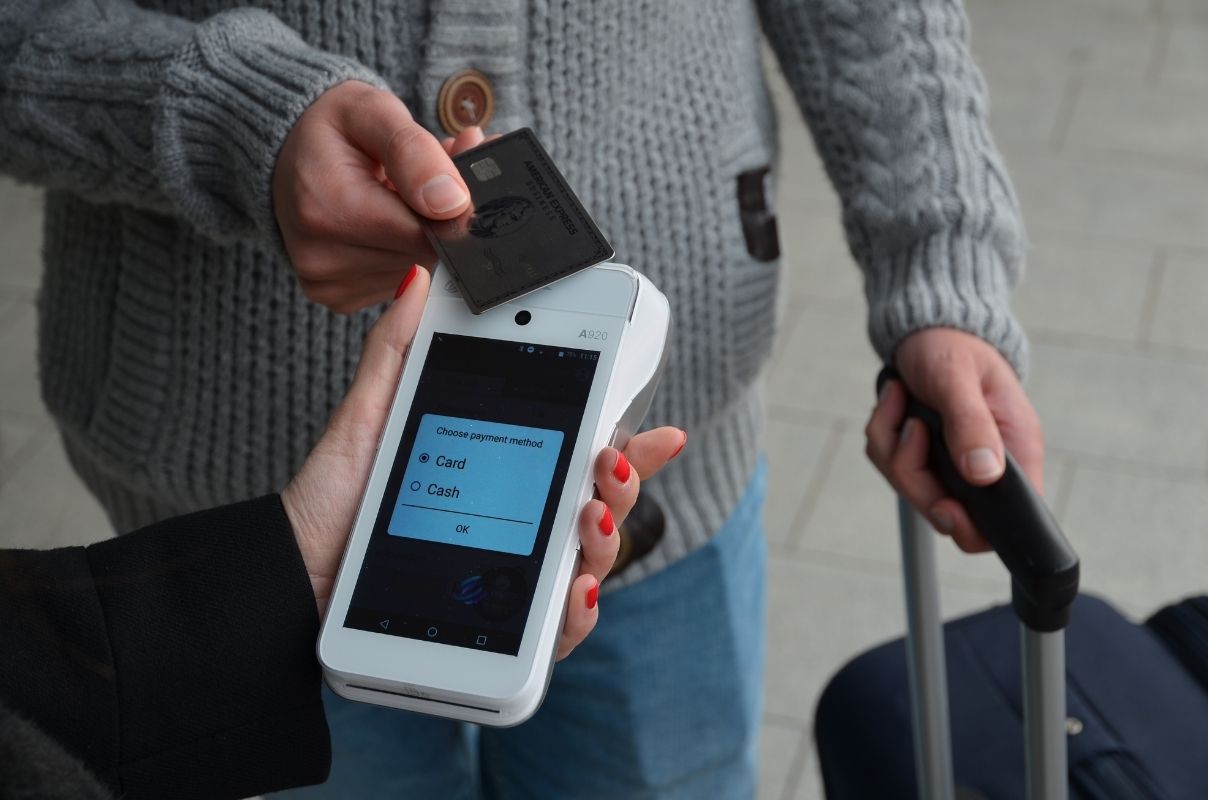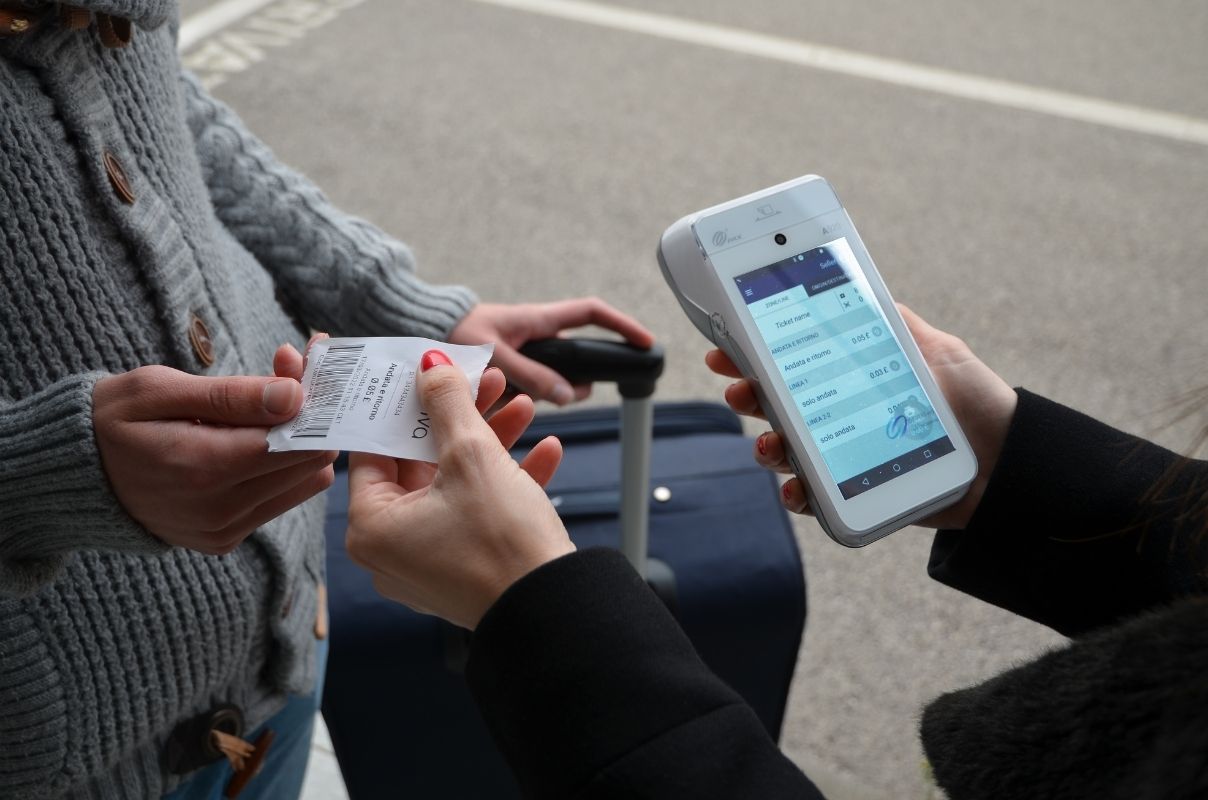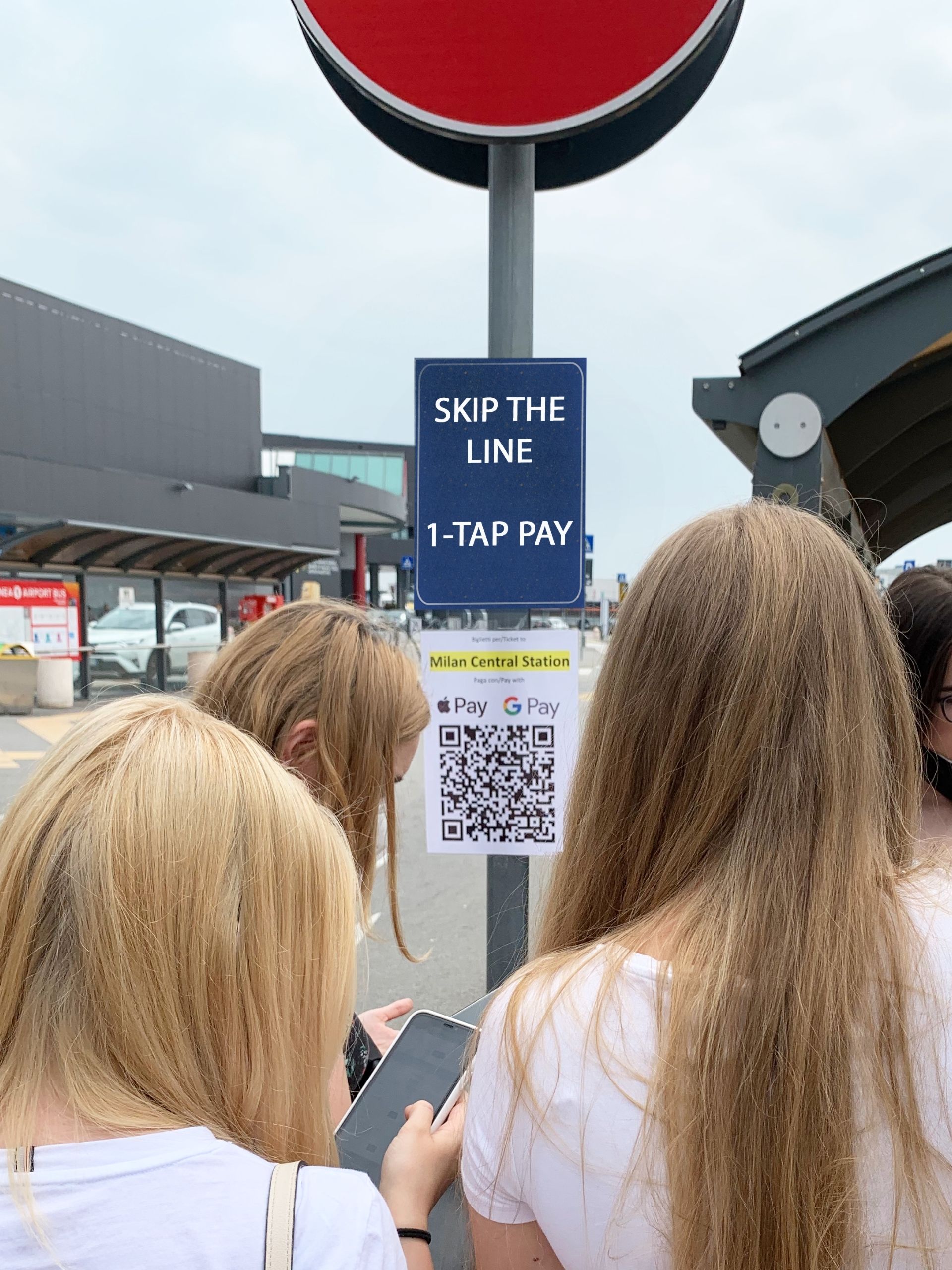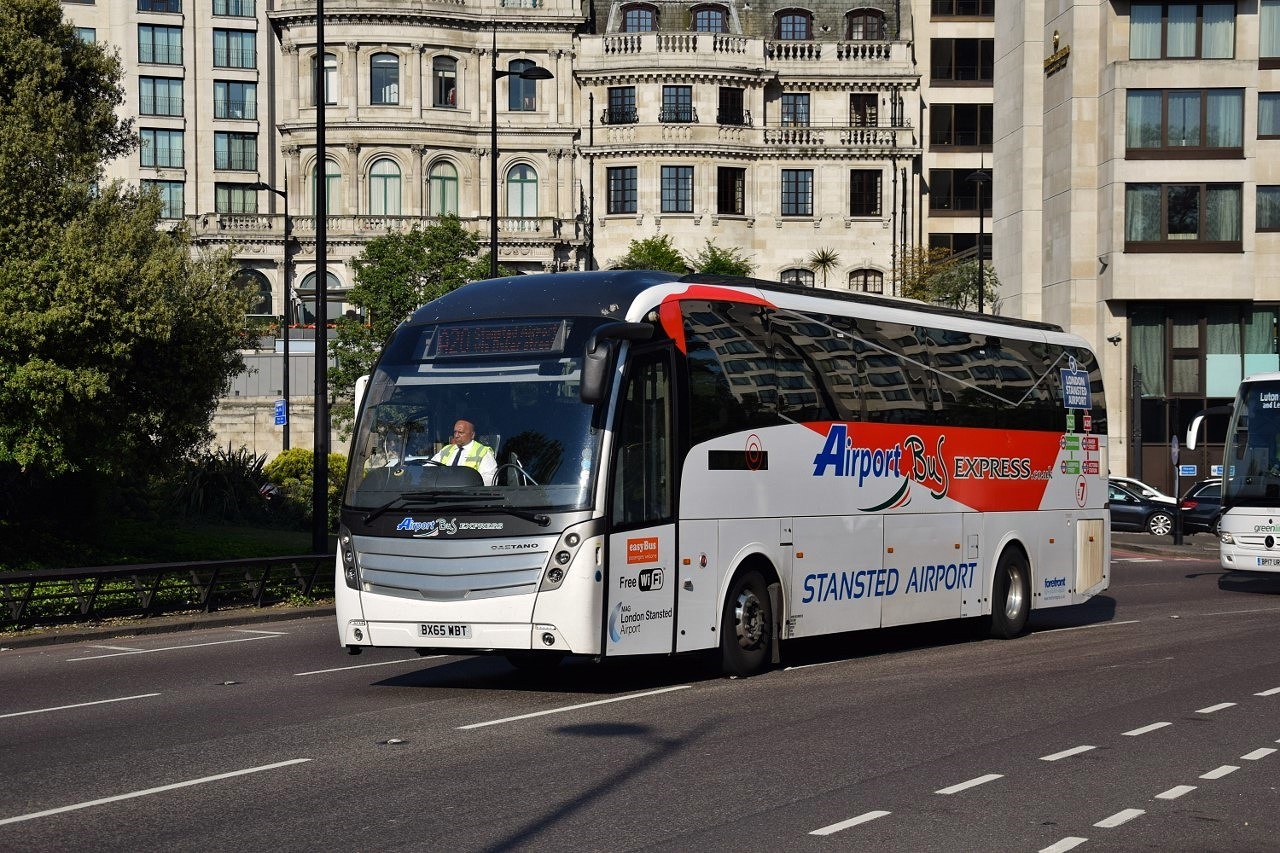The experience of one of our long-standing customers, Airport Bus Express, which operates airport transfers in the city of London (United Kingdom) represents a significant testimony to the importance of multichanneling to capture a wider user base and consequently increase sales. While on one hand there are completely digital solutions to accommodate users who purchase the ticket in advance in complete autonomy (through mobile apps and e-commerce such as our solution OpenMove WAY), on the other hand transport operators must have the ability to perform sales on board or at the bus stop, especially in dynamic travel scenarios such as airport-city routes covered by high-frequency shuttle services.
For Airport Bus Express, we have implemented two different solutions aimed at enriching and diversifying the distribution and sales channels, which serve two distinct customer segments.

POS payment
Thanks to an extremely high performance and reliable all-in-one tool (the PAX A920 device we used for this project is visible in the photo), it is possible to accept credit card payments in a fully integrated way in the ticketing system. The POS is especially important for tourists, a heterogeneous user category that makes use of multiple currencies, and represents a differentiator to be chosen by those who (and there are more and more) prefer credit cards to cash and therefore offer a better alternative over the competition.
The so-called second generation POS devices are very versatile tools that allow to host our OpenMove ACT solution on board. They represent the ultimate tool for the staff in the field, who can benefit from an integrated device capable of providing for print, smart card issuance, validation, POS (Point of Sale) and AVL (Automatic Vehicle Location) capabilities and which therefore acts as a single enabling element for all operational scenarios in the field: sale, inspection, collection and tracking of the vehicle.
We have paid great attention to the overall user experience (UX) of the operators, who often find themselves working in challenging conditions; the clear and simple graphical interface and the seamless flow of operations result in smoother and faster sales, with the dual advantage of a proven increase in revenues and decrease in frustration due to its ease-of-use and comprehensive design.

Express purchase with QR Code
The Covid-19 pandemic has definitively cleared the use of the QR Code by ubiquitous segments of the population, who have embraced the urgency and immediacy of this call-to-action and who identify it as an access point in the digital world. So why not use the newly formed attention of the ridership and as a catalyst to encourage self-service purchase of travel tickets, even on-the-go?
For many of our customers, we have implemented a solution that is as simple as it is effective: a simple QR Code sticker placed at the departure of the bus that allows you to book a seat and purchase a ticket for the next ride with a single tap. Operation is radically simple:
- the user frames the QR Code with the smartphone
- a page opens containing the default ticket for the corresponding route, with a recap of the necessary information
- there is only one button, which triggers the payment with the built-in systems natively available on iOS and Android, namely Apple Pay and Google Play, or alternatively by manually entering the credit card number
The advantages of this solution are soon realized due to the fact that more than 2 billion people on the planet have their credit card already linked to their smartphone. For them, literally a single tap is enough: the operating system automatically pre-fills first name, last name, email and credit card. The user experience is so seamless and so easy to use that it instantly becomes an element of marketing and differentiation from the competition, for instance by catching the travelers’ attention with captivating messages such as “Skip the line!”.
Operational management is also straightforward: thanks to the OpenMove ATLAS dashboard, it is possible to configure the system, automatically generate the QR Codes to be posted at the bus stop and dynamically associate them with routes and fares at will.

What do these two new sales channels have in common?
These two new sales channels are the tangible manifestation of the potential of Account Based Ticketing, which is capable of managing any complexity in the central system and delivering travel tickets on various media. In fact, tokens can be easily translated (and sometimes materialized) in different forms suitable for specific use cases:
- the purchase through e-commerce and mobile app features the delivery of a QR Code as a digital receipt
- operators deliver single-ride tickets on thermal paper by the means of a bar code (an effective and inexpensive solution) or season tickets on smart cards with ABT logics
- the ticket offices are equipped with an all-in-one device that allows extremely fast mass printing with pre-cut
These are just a few examples: Account Based Ticketing lends itself to very diversified scenarios and can potentially also feature electronic ID cards or other user identification. A lot of confusion revolves around the Account Based Ticketing paradigm and therefore we began to provide clarifications in the new blog posts, starting from this funny conversation between media in the Card Based and Account Based scenarios.


